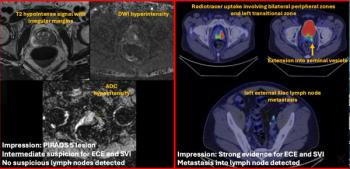
Scrutinizing the Scrub Scam
Who wears the scrubs in a medical relationship?
Ah, the aura of being (like) a doctor. Respect. Notoriety. Admiration. Who isn’t intrigued by it? Who doesn’t want to know a doctor or be near one? Who doesn’t secretly desire to be one? Ben Casey. Dr. Kildare. Marcus Welby, MD. Hawkeye Pierce. Who wouldn’t enjoy passing through doors open to them but blocked to others. St. Elsewhere. ER. House. Grey’s Anatomy. And so on. And while this shouldn’t be particularly surprising, like everything in life, there are situations where some take advantage of a situation for their gain while others choose a different path.
Because of my IR background, I recently experienced a very interesting situation. We had a morning liver chemoembolization case for metastatic colon carcinoma and were hosting an industry representative since we were trialing a new catheter. As usual, the rep arrived in forest green surgical scrubs. They were not the administration’s approved color, but oh well. The case went fine. All were pleased with the outcome. Case was over, electronic “paperwork” completed and everyone went about their business, onto the next case. Then Tumor Board over lunch. Great cases, including an angiosarcoma and breast carcinoma in a BRCA positive 34-year-old woman.
Afternoon cases included a repeat biopsy of a 2.5 cm complex thyroid lesion. Prior FNA suggested carcinoma, but was inconclusive with a repeat biopsy suggested. Seemed simple enough. Coags were normal, so we made plans for a definitive core needle biopsy.
I had previously agreed to trial a new needle, but was surprised when the needle rep arrived to witness or assist during the biopsy. I mentally smiled and dismissed his “vendor vigor.” As I gathered paperwork for the obligatory “time-out,” I briefly pondered the rep’s navy blue scrubs and silently reflected on the trichotomy of green vs. blue vs. approved brown. The case went well, no complications, patient left the department in good condition and as I completed my post-procedure note, I dismissed the thought of ever revisiting the cast of characters or circumstances of the morning embolization or afternoon biopsy cases. I was already anticipating wrapping up all daily activities since I was flying out that evening.
A few hours later while waiting in the TSA security line I began visiting with a sharply dressed young women who initiated the conversation by telling me she thought she would be late for her flight since she had to change out of her scrubs back into her business suit to catch her flight home. Turns out she also was an industry rep for a new laparoscopic laser that was trialed earlier that day in OR. We spoke very briefly, but I was impressed with her professionalism.[[{"type":"media","view_mode":"media_crop","fid":"27304","attributes":{"alt":"","class":"media-image media-image-right","id":"media_crop_2658643184534","media_crop_h":"0","media_crop_image_style":"-1","media_crop_instance":"2630","media_crop_rotate":"0","media_crop_scale_h":"0","media_crop_scale_w":"0","media_crop_w":"0","media_crop_x":"0","media_crop_y":"0","style":"height: 173px; width: 150px; border-width: 0px; border-style: solid; margin: 1px; float: right;","title":" ","typeof":"foaf:Image"}}]]
To my chagrin, after clearing security and picking up a newspaper, I arrived at the gate area and noticed all three reps seated in different sections, all waiting to board the same flight. Two were still wearing the same scrubs I’d seen earlier in the day. Then I really started to wonder. How many airports, airplanes, boarding gates, bathrooms, restaurants, hallways, etc. had these scrubs seen before they entered the procedure rooms earlier that day? How many contagions, bacteria, viruses or other undesirables might they be transporting?
It got me to thinking about avoiding complacency and remaining vigilant in all areas of our workplace. We do a good job of focusing on maintaining our interpretative edge, consulting and performing procedures, but it’s not enough to examine just ourselves, our techs or nurses. We need to constantly scrutinize everyone that enters our department if we want the best outcomes all the time. Our patients deserve no less.
Newsletter
Stay at the forefront of radiology with the Diagnostic Imaging newsletter, delivering the latest news, clinical insights, and imaging advancements for today’s radiologists.




























